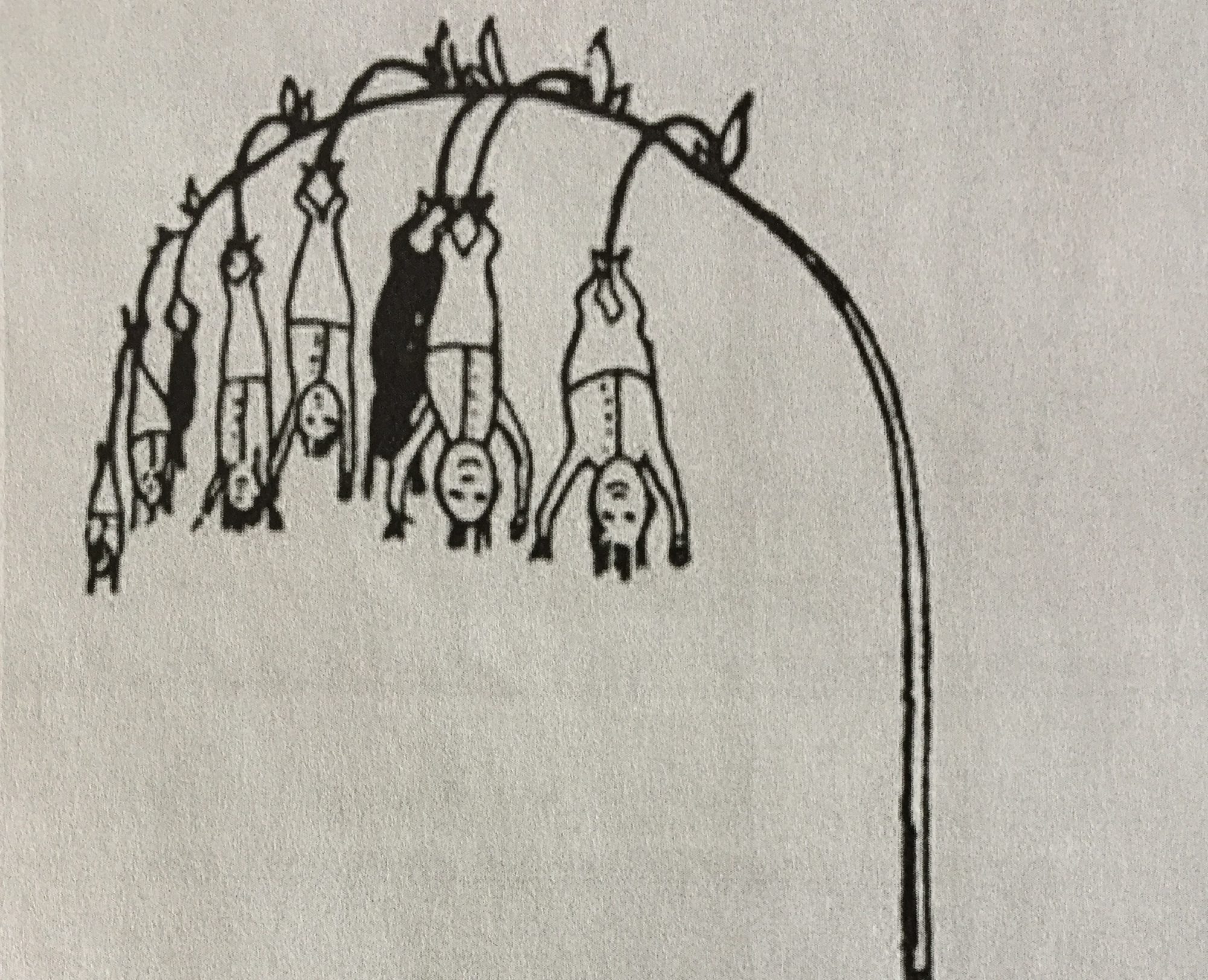I shall occasionally be posting on this blog some highlights from The Gromboolia Anthology of Nonsense, the online anthology I’m building on nonsenseliterature.com. Considering the website is only a couple of months old, I suppose I could be posting quite a lot of recent acquisitions and features, but I’ll limit this post to the most recent, which included, in the category of literature, Alastair Reid; in music, the band Cardiacs; and in scholarship, my article from 2001, “The Original Interactive Game: Edward Lear’s Literary Nonsense” (The Five Owls).
In the study of nonsense, one rarely comes across Alastair Reid, but I hope to rectify that a little by putting him in Gromboolia. His book Ounce Dice Trice (1958) is in The New York Review Children’s Collection, a series that, since 2003, has brought certain worthy books out of their out-of-print status and back to the world, including works by Ruth Krauss, James Thurber, Eleanor Farjeon, and T. H. White. Reid’s book is a stunning dive into the sound and texture of words, guiding us on ways to construct our own words, on words as names, as numbers, and other constructions that are shown to be quite arbitrary. It gives us the power to create our own words and beyond that, systems of word-usage. It starts off rather tamely, with categories of words, such as those that have “bug” in them “to be said when grumpy,” including: “humbug, bugbear, bugaboo, bugbane, ladybug, bogybug, bugseed.” Even here, Reid begins to veer off into nonsense. Next, he begins to create words for familiar (or seemingly so) things:

Several pages are devoted to the possibility of names:
And he moves on to question why we should count in the old boring ways, suggesting new words for the numbers one to ten:
He creates what he calls “Garlands” which are loops of definition that include sense and nonsense, and also some “Curiosities,” where the picture-text incongruity is particularly strong.
The ongoing series put out by Dave Eggers, oops—I mean, Dr. and Mr. Doris Haggis-on-Whey–resembles some of the pseudo-scientific jibjab you’ll find here. Overall, Reid’s book is not only excellent nonsense, but also a guide to empowering children and adults to become their own Humpty-Dumpty, a supreme arbitrator and controller of words!
In the category of music, I’ve just added the band Cardiacs, and the songs “Tarred and Feathered” and “Loosefish Scapegrace.” In both songs, there is some chaos, of course, and certain manifest mechanics of nonsense, such as arbitrariness in melody, harmony, and musical structure (not to mention lyrics). The nonsense is balanced by various kinds of sense. That is, the music is crazy in certain ways, but it’s not so crazy as to be atonal or even “experimental” in most definitions of it. The lyrics, likewise, often do make sense, especially for “Tarred” (while “Loosefish” takes a few more nonsensical lyrical turns). The former also has a video, and when you look at the whole package (music, lyrics, video performance), there is, I would argue, a nonsense effect, a tension between meaning and non-meaning (thank you Wim Tigges). It’s also crazy fun poppunkprogskunk!
Lastly, I revived an article long-deceased, “The Original Interactive Multimedia Game: Edward Lear’s Literary Nonsense,” published in the now-defunct journal The Five Owls (in 2001). This somewhat informal article analyzes Edward Lear’s literary nonsense from the perspective of interactivity and reader-response theory, taking into account the combination of text and illustration. It is a beginner’s guide to how Lear’s nonsense functions, its pedagogical value, and the sometimes subversive results.
Until next time, watch out for the whales (conveniently named by Reid), Hugh, Blodge, Barnaby, Hamish, Chumley, Murdo, Cham, Okum, and Sump.




